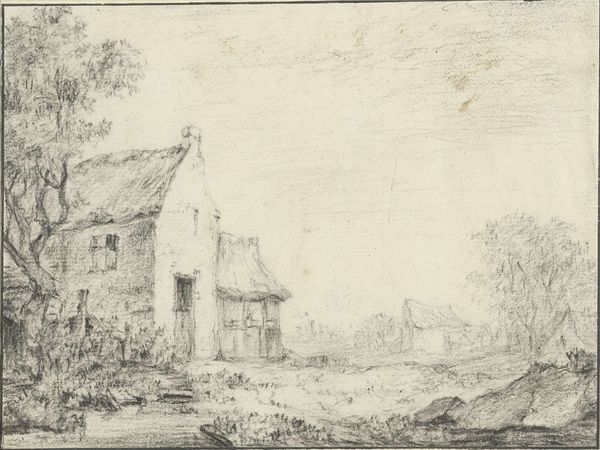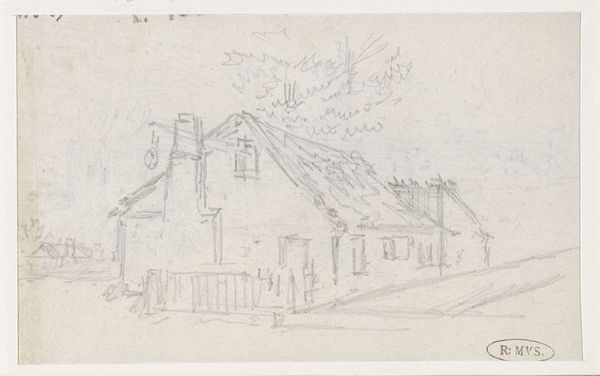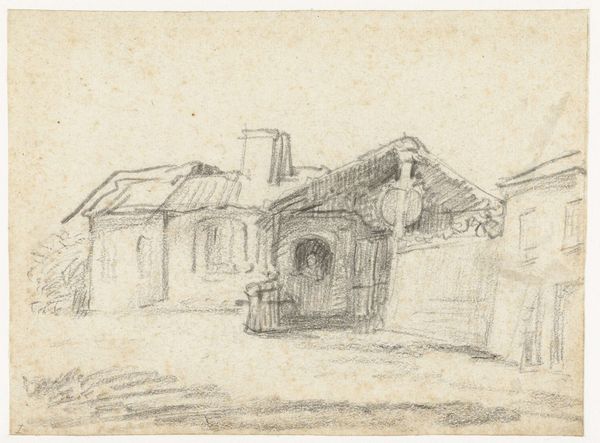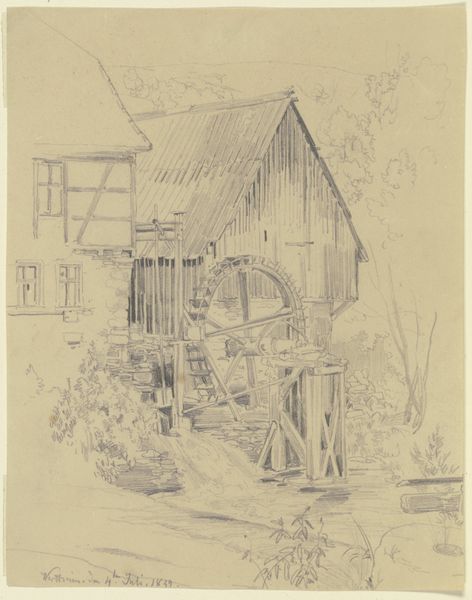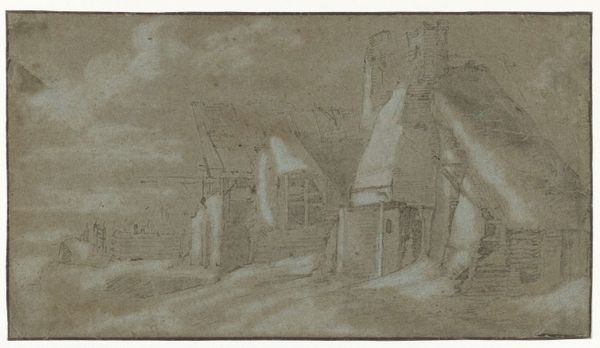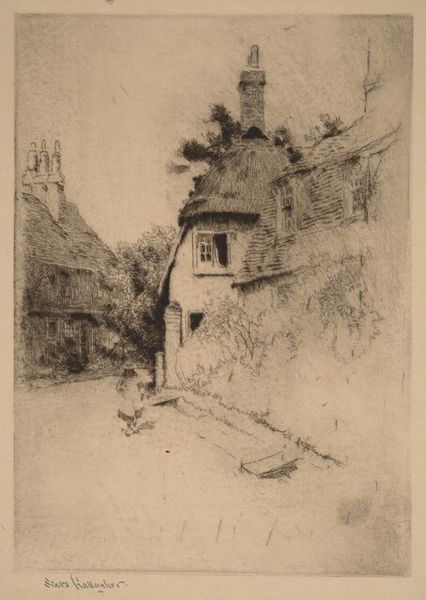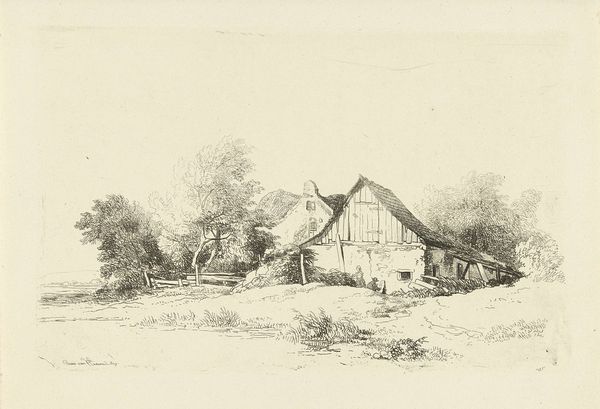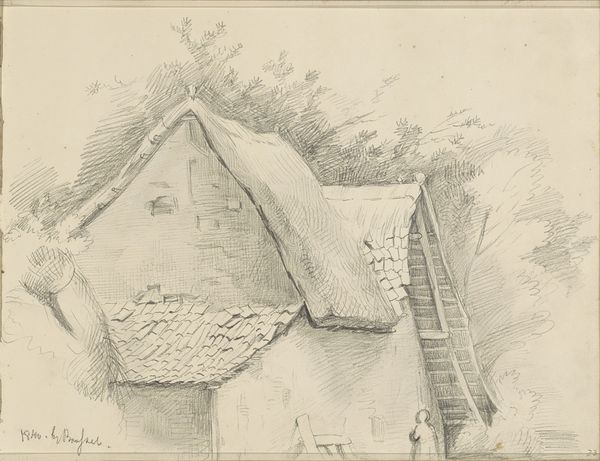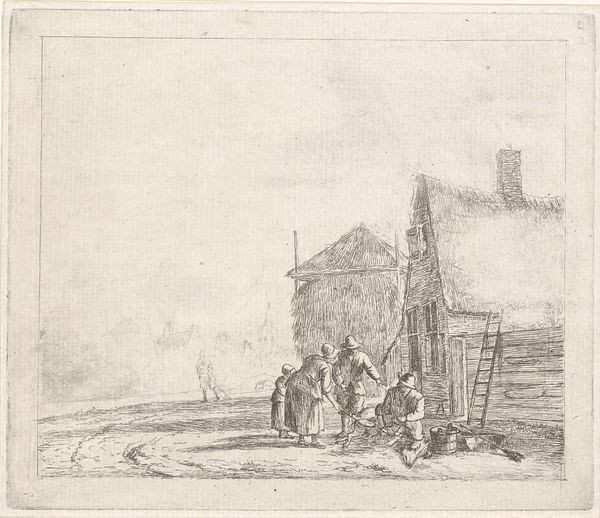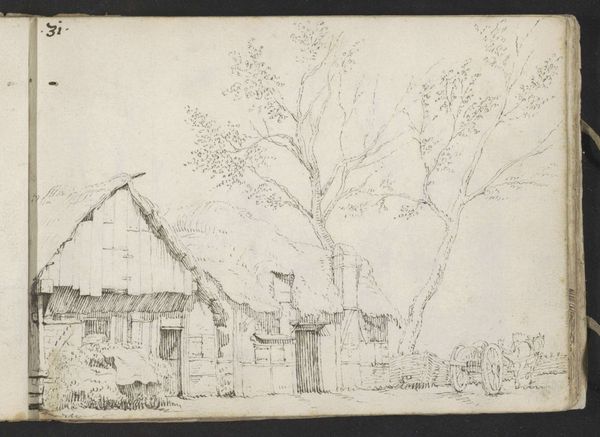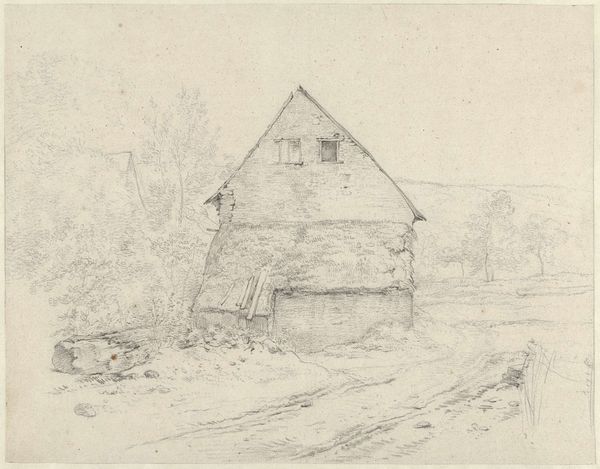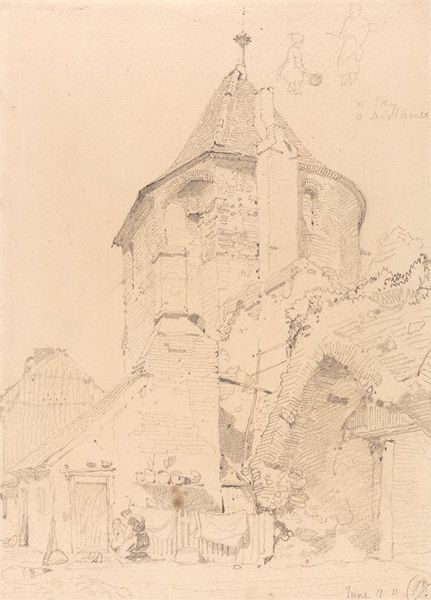
drawing, pencil
#
drawing
#
landscape
#
romanticism
#
pencil
Copyright: Public Domain: Artvee
Curator: Before us, we have John Sell Cotman's "Porch and Belfry of Thurgarton Church, Norfolk," a pencil drawing from around 1810. Editor: My first impression is one of quiet solitude. The muted tones, the slightly crumbling structure… it speaks of a time slipping away. There is someone on the lower left side of the drawing too, it helps capture how intimate this work feels. Curator: Absolutely. Cotman was working within a specific cultural context, part of the Romantic movement that often idealized the rural past in the face of rapid industrialization. We see how his landscapes gave voice to ideas of loss and transition within society. Editor: Do you feel there's a tension in this drawing? Cotman meticulously renders the architectural details of the church, its textures and structures, while simultaneously highlighting its vulnerability. It reminds me of ideas about what Michel Foucault speaks about the structure and architecture and the body itself being inscribed in the societal architecture. Curator: That’s an insightful observation. Think about the role the church played within village life during that era, a seat of authority, and it being visually "on the decline," in part represents shifts in the social power structures as urban centers grew, influencing ideologies. And from an art market point of view, remember that these kinds of landscapes were desirable in an age of collecting, solidifying notions of cultural value linked to representations of history. Editor: Right, the aestheticizing of decay as a way to create the "nation" through landscape paintings! Curator: Yes. Editor: Thanks for guiding me. It's enriching to connect the piece to a broader discussion about historical change. I now wonder how these artworks shape our present-day nostalgia for the past. Curator: It reminds me how relevant older images are and can remain to this day, and it pushes me to consider the politics involved.
Comments
No comments
Be the first to comment and join the conversation on the ultimate creative platform.
